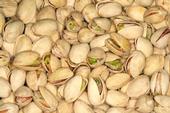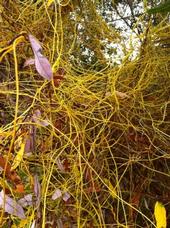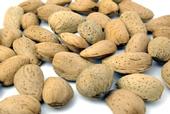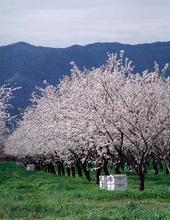- Author: Jeannette E. Warnert

Nut harvests in California are winding down, and growers of almonds, walnuts and pistachios are mostly happy with their yields, reported Tim Hearden in Capital Press.
- Almond growers expect to meet an early estimate of 1.95 billion pounds statewide, which would be a record
- Pistachio growers in the San Joaquin Valley are enjoying their second-largest crop ever after last year's record yield
- Walnut growers expect this year's yield to be 485,000 tons, slightly lower than last year's 503,000 tons
"The rumors I've heard is that guys are still complaining about the quality" of walnuts, said
- Author: Jeannette E. Warnert

Japanese dodder, an exotic parasitic weed which is a high priority noxious weed in California, was recently detected in a natural wooded area in Lompoc, reported the publication Growing Produce. It is the first time it is reported in Santa Barbara County and the Agriculture Commissioner’s office is taking immediate action. The article drew information from a blog post by Surendra Dara, a UC Cooperative Extension farm advisor in Santa Barbara County.
- Author: Jeannette E. Warnert

The cost of growing almonds is rising, according to a report in the Bakersfield Californian based on a recent UC cost study.
The 2011 cost and return study Sample Costs to Establish an Orchard and Produce Almonds found that it takes about $2,862 per acre to produce almonds in the northern San Joaquin Valley, up nearly 20 percent from $2,393 in 2006.
An updated report on almond production in the southern San Joaquin Valley is not yet available. The last time the university evaluated almond operations there was 2003, when the cost...
- Author: Jeannette E. Warnert

The KQED blog "News Fix" included a quick update yesterday about the California deep freeze that fizzled.
"It didn't snow in San Francisco — not really — or anywhere else near sea level late last week. Boo hoo. Let's get over it," wrote Dan Brekke.
But it was cold, so Brekke spoke to UC Cooperative Extension farm advisor Joe Connell about the effect of the cool February temperatures on California's almond crop.
Honeybees don’t like to fly in rain or freezing temperatures, Connell told him, so almond pollination has been delayed.
In other bee news,...
- Author: Jeannette E. Warnert

Even though the earliest almonds are already starting to bloom, this week's rain storms don't spell ruin for California farmers, according to UC Cooperative Extension farm advisor Joe Connell.
Connell shared his thoughts about bloom with reporter Heather Hacking of the Chico Enterprise Record. He said he has 80 years of bloom data in his office, and the date of first bloom is anywhere from the last week in January to the first week of March.
Because bees were in almond orchards last week, before the rain, the pollen gathered will help strengthen hives and prepare the bees for the work of the main almond bloom,...



